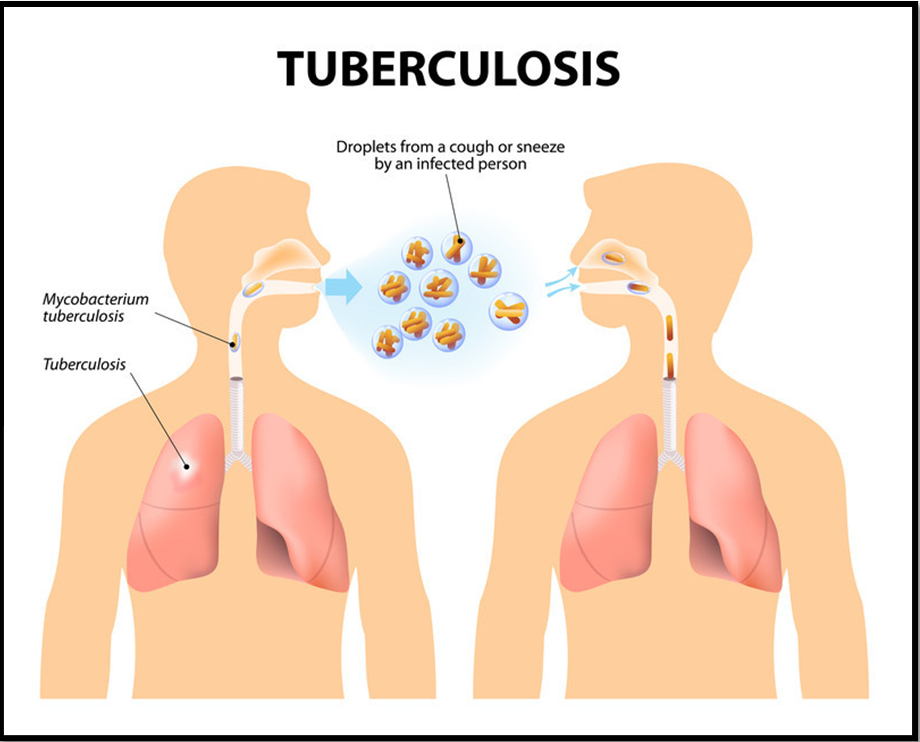SCALING UP TB CARE
Syllabus:
- GS 2: Issues relating to development and management of Social Sector/Services relating to Health, Education, Human Resources.
Focus:
- Recently, the Ministry of Health and Family Welfare released the India TB Report 2024, which highlights that the mortality rate due to Tuberculosis (TB) had declined from 28 per lakh population in 2015 to 23 per lakh population in 2022.
Source: HARWARD
What is Tuberculosis
- Tuberculosis (TB) is caused by bacteria Mycobacterium tuberculosis that most often affect the lungs. It is curable and preventable.
- TB is spread from person to person through the air. When people with lung TB cough, spit or sneeze, they spread the TB germs into the air.
- An individual needs to inhale a few of these germs to become infected.
- About a quarter of the world population is estimated to have been infected with TB bacteria, but most people will not go on to develop TB disease and some will clear the infection.
- Those who are infected but not yet ill with the disease cannot transmit
- People infected with TB bacteria have a 5–10% lifetime risk of falling ill with TB.
- Those with compromised immune systems, such as people living with malnutrition or diabetes, HIV or people who use tobacco, have a higher risk of falling ill.
- When a person develops active TB disease, the symptoms (such as coug, night sweats, fever or weight loss) may be mild for many months.
- Without proper treatment, 45% of HIV-negative people with TB on average and nearly all HIV-positive people with TB will die.
Key Highlights of the TB Report
|
Introduction to Involvement of the Private Sector
- Significant Role: The private sector is responsible for over 80% of primary healthcare delivery in India.
- Government Recognition: Initiatives like Ayushman Bharat PM-JAY recognize the sector’s extensive reach, providing insurance for secondary and tertiary care.
- Support to Primary Care: Ayushman Aarogya Mandirs and wellness centres have been introduced to enhance primary healthcare.
- Importance in Disease Elimination: The sector is crucial in government programs aimed at eliminating diseases like tuberculosis.
- Substantial Patient Notification: In 2023, the private sector notified over 8.4 lakh tuberculosis cases, highlighting its vital role.
Public-Private Partnerships and Models
- Collaboration Increase: From a 21-fold increase in TB patient notification by the private sector since 2013.
- Public Private Interface Agency (PPIA): Serves as an effective intermediary between the national TB program and private providers.
- Expansion of Models: The Patient Provider Support Agency (PPSA) model has expanded to over 200 districts, creating a network of private healthcare providers.
- Standard Adherence: Ensures that private sector practices adhere to the “Standards of TB Care” in India.
- Support Mechanisms: The PPSA helps in linking TB patients to free diagnostic services and treatment, along with social support programs like Nikshay Poshan Yojana.
Challenges and Solutions in TB Care
- Underutilization of Informal Providers: Informal healthcare providers remain an underutilized resource despite their high trust within communities.
- Engagement of Retail Chemists: Private chemists, often the first healthcare contact, are not adequately engaged in TB control efforts.
- Issue of Drug Resistance: Lack of regulatory compliance can lead to the indiscriminate use of medicines, increasing the risk of drug-resistant TB.
- Patient Dropout: Studies indicate high rates of treatment discontinuation among patients, which could be mitigated by better engagement of informal providers.
- Necessity for Better Incentives: Ensuring that informal providers and pharmacists have the right incentives and support could greatly enhance their role in TB elimination.
Policy Recommendations and Future Steps
- Leveraging Informal Providers: Enhance the role of rural medical practitioners and village doctors in TB screening and referral processes.
- Better Integration of Retail Chemists: Improve engagement with retail chemists to monitor drug schedules and prevent over-the-counter antibiotic sales.
- Regulatory Compliance: Strengthen mechanisms to ensure compliance with drug sale regulations and patient notification protocols.
- Continuity of Treatment: Encourage informal healthcare providers to help maintain continuity in patient treatment to reduce dropout rates.
- Public Health Partnership: Promote partnerships between informal providers, pharmacists, and public health missions to improve primary care quality.
| Initiatives to Combat TB
Global Efforts
India’s Efforts
|
Source: Indian Express
Mains Practice Question:
Public-private partnerships have shown promise in enhancing healthcare delivery systems, especially in the fight against diseases like tuberculosis (TB) in India. Critically analyze the role of the private sector in combating TB, highlighting the successes and challenges of current models such as the Patient Provider Support Agency (PPSA) (250 words)
Associated Articles:
https://universalinstitutions.com/eliminating-tuberculosis/
https://universalinstitutions.com/the-road-to-ending-tuberculosis/




